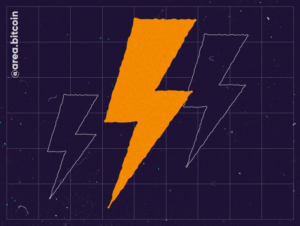If you’re interested in understanding more about bitcoin, you’ve likely heard of On-Chain Analysis. It’s a data analysis technique that utilizes information directly from the blockchain to glean insights into user behavior, fund flow, and network activity.
Bitcoin, as a decentralized digital currency, has revolutionized the financial sector and how transactions are conducted worldwide. One of the most intriguing and powerful features of Bitcoin is its transparency – every transaction made is recorded on the blockchain and is publicly accessible.
The Bitcoin blockchain generates thousands of real-time data points that allow us to access more accurate and reliable information in a way unthinkable in the traditional financial market of banks and corporations. Thus, this data availability makes it possible to conduct an analysis known as “On-Chain Analysis”.
In this article, we will explore in detail what this is, how it works, how it differs from technical analysis, and its key indicators. Let’s dive in!
On Chain Analysis
As we’ve already mentioned, On-Chain Analysis is a data analysis technique used in Bitcoin that involves the collection and interpretation of information directly from the blockchain, where transactions are recorded.
In this technique, the transparency of the blockchain is utilized to understand the economic activity within the network, including the identification of wallet addresses, transaction volumes, transaction costs, and more.
Therefore, On-Chain Analysis is the study of data contained in the Bitcoin blockchain. These data include details such as:
- number of wallet addresses;
- transaction values;
- dates and times of transactions;
- number of transactions;
- complete history since the first block mined by Satoshi;
- miners’ wallets (to see if they are selling or holding and how many BTC they have);
- the fee accumulated in each block;
- how many bitcoins each address has;
- who are the whales and who are the shrimps;
- wallets with a few satoshis;
- what are the oldest addresses;
- and so on!
All of this information can be used to gauge market sentiment, understand the dynamics of the Bitcoin market, predict future trends, identify patterns, observe how investors are behaving, correlate with other movements, and attempt to project this past behavior onto potential future price movements.
On-Chain data is useful for distinguishing pure speculation from real demand seeking to hold assets for long periods, like the classic hodl. Based on these metrics, it’s possible to assess whether Bitcoin is overbought or oversold, considering its use, network utility, and current price.
Is On-Chain Analysis different from technical analysis?
Yes, On-Chain Analysis is different from technical analysis.
While technical analysis uses charts and indicators to attempt to predict future market movements based on price and trading volume, On-Chain Analysis focuses on data directly collected from the blockchain, such as transactions, wallet addresses, and trading volumes.
Thus, this type of analysis is quite different from technical analysis as it deals more with fundamentals than just price dynamics. Prices also appear, but correlated with other data.
It’s something that helps us to look inside the protocol and also to have a more fundamentalist view of what’s happening on the blockchain. Moreover, these are public data, accessible by anyone, anywhere in the world.
Also read: What is Fedimint?
On-Chain Indicators
On-Chain indicators are metrics that provide insights into user behavior and network activity.
There are various indicators that can be analyzed, but here I’ll present three of the most famous in On-Chain Analysis.
Many of these charts can be found for free on the site lookintobitcoin.com.
RHODL Ratio
The RHodl Ratio measures the relationship between the amount of bitcoin held by long-term investors and the amount held by short-term investors.
It’s calculated by dividing the amount of bitcoin held in wallets for more than a year by the amount of cryptocurrency held in wallets for less than a year.
Thus, when this ratio is high, it means there are many short-term hodlers, and the market may be overheated or overbought.
That is, it means many hodlers are recent and may have come during the excitement of the price rise, so there’s no guarantee they will hodl for the long term.
Simply put, a high RHODL ratio can indicate a solid base of long-term investors, while a low RHODL ratio can indicate a lack of confidence in Bitcoin or a short-term selling trend.
RHODL Ratio Chart

The blue line on this chart represents the price of BTC since 2011, and the red line represents the hodl rate. Therefore, if the red line reaches the upper red box, it suggests that there are a lot of recent hodlers, signaling a possible market peak (as we see in 2011, 2014, and 2017).
However, if the red line touches the blue box, it signifies that the majority of hodlers are veterans at this moment. This could indicate a market bottom, or in other words, the best times to buy (as happened in 2012, 2015, and 2019).
MVRV-z
The MVRV-z is an indicator that compares the current market capitalization with the realized value, i.e., when most people took profits.
It is calculated by dividing the market value of bitcoin by the realizable value.
This indicator measures when each BTC last moved, takes the price on that day, and plots an average. Thus, when the market value is above the value at which people most realize profits, it means the price is overheated or overbought. When it is significantly below, it is oversold, meaning it’s cheap.
Essentially, the MVRV-z is used to assess whether Bitcoin is overbought or oversold relative to its realizable value. Therefore, it can be used to identify buying or selling opportunities based on the overvaluation or undervaluation of the cryptocurrency.
MVRV-z Chart

The blue line on this chart represents the price of Bitcoin multiplied by the number of coins in circulation (or its market capitalization over time).
The yellow line displays the average realized value, the price of each Bitcoin when it was last moved, the price the last time it was transferred from one wallet to another.
The red line represents the Z-Score, a standard deviation that extracts data extremes between the market value and the realized value. It’s an attempt to approximate Bitcoin’s “fair value”, an endeavor to calculate each Bitcoin’s valuation.
Therefore, when the red line enters the red box, it indicates that Bitcoin is very overbought, signaling a potential bottom. When it touches the green box, it indicates that it is oversold, suggesting that BTC might be undervalued at that particular moment.
SOPR (Spent Output Profit Ratio)
The SOPR (Spent Output Profit Ratio) is an On Chain indicator used in BTC analysis that measures the average profit of all unspent transactions that were sold in relation to the original purchase price of those transactions. In other words, it’s when people are selling at a profit or a loss.
The SOPR is used to assess the selling or buying pressure in the Bitcoin market. Therefore, when the SOPR is high, it could suggest that investors are selling their cryptocurrencies at a profit, which may lead to selling pressure in the market.
Conversely, when the SOPR is low, it could indicate that investors are selling their cryptocurrencies at a loss, which could lead to buying pressure in the market.
It’s an excellent indicator to capture market sentiment.
If people are selling at a loss, they are scared and therefore capitulating due to some news or event.
This indicator helps to understand what the market sentiment is and see if negative news is directly affecting investor behavior.
SOPR Chart

The gray line on this chart is the price of Bitcoin, and the orange line is the SOPR. If the orange line is above the black line, marked with the number 1, people are selling their assets at a profit.
Thus, during market peaks, the orange line rises more. When it crosses the black line downwards, it means that people are selling at a loss, out of fear.
Looking at the SOPR helps us identify how people are behaving in relation to the asset’s price at a given moment.
It’s good data to correlate whether people’s fear makes sense compared to what other on-chain data are showing.
Other On-Chain Indicators
NVT (Network Value to Transactions Ratio)
The NVT is an indicator that compares the market value of Bitcoin to the volume of transactions on the network.
The market value is calculated by multiplying the current price of the cryptocurrency by the total number of units in circulation, and the transaction volume is the total value of all transactions occurring on the network within a given timeframe.
The NVT is used to assess the valuation of Bitcoin in relation to network activity. Thus, a high NVT may suggest that the cryptocurrency is overvalued in relation to transaction volume, while a low NVT may suggest that it is undervalued.
Puell Multiple
The Puell Multiple is an indicator that links the value of miners’ rewards with the 365-day moving average of the daily supply of new coins issued.
The Puell Multiple is used to determine the fair value of BTC and the selling pressure from miners.
A high value may suggest that the cryptocurrency is overvalued compared to its fair value, while a low value may indicate a buying opportunity.
Reserve Risk
This indicator measures investors’ confidence in holding their coins, assessing the relationship between the circulating supply and the total available supply.
When the circulating supply is low relative to the total available supply, it indicates that investors are keeping their coins in reserve, trusting in the long-term appreciation of BTC.
Balance in Whale Wallets or on Exchanges
This indicator assesses the buying and selling activity of large investors or exchanges, used to identify short-term trends and possible trend reversal points.
When the balance in whale wallets or exchanges starts to decrease, this may suggest that large investors are beginning to sell their coins, which could lead to selling pressure in the market.
On the other hand, when the balance starts to increase, it may suggest that large investors are beginning to accumulate coins, which could lead to buying pressure in the market.
Conclusion
On-chain analysis is a separate world that helps us not to be too susceptible to news, but rather to look at what investors are actually doing.
It’s a valuable tool that can provide unique insights into the behavior of the Bitcoin market.
However, it’s important to note that while on-chain analysis can provide valuable information, it’s not infallible and should be used in conjunction with other forms of analysis and research.
Moreover, due to the volatile nature of Bitcoin, even the most informed predictions can sometimes be wrong. Therefore, it’s always important to conduct appropriate risk management when investing in Bitcoin.
Many different metrics can bring diverging information, and you need to know how to differentiate which information makes sense at that moment and what is noise that can be disruptive.
This type of analysis is very new; the indicators are still being validated and tested, so it’s good not to take everything as an absolute truth, but as auxiliary data to help you capture market movements.
Bitcoin’s on-chain analysis offers a fascinating way to study and understand the state of the network. By analyzing the data directly from the blockchain, investors can gain valuable and unique insights that can help guide their investment decisions.
Anti Research
If you want to receive weekly reports with on-chain analysis of the Bitcoin network, including mining, lightning, and much more, get to know Anti Research, the research and analysis arm of Area Bitcoin.
These reports will be essential in keeping you well-informed about the main events on the network and helping you have accurate data so that you know what to do with your investments at each moment.
Until the next article, and opt out!
Share on your social networks:
Area Bitcoin is an educational Bitcoin school that aims to accelerate the financial and intellectual sovereignty of all individuals.
Did you like this article? Consider buying us a cup of coffee so that we can keep writing new content! ☕







